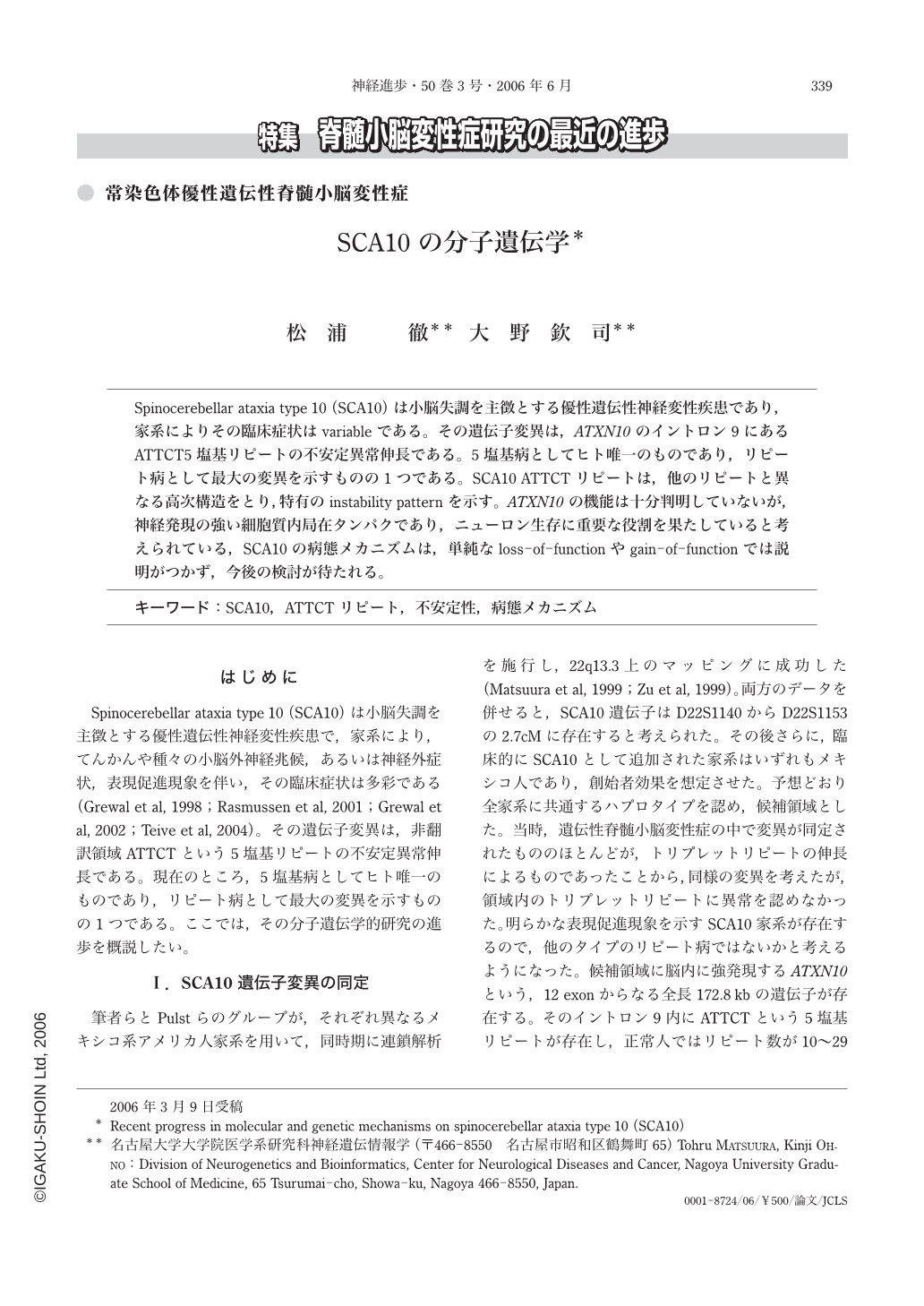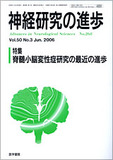Japanese
English
- 有料閲覧
- Abstract 文献概要
- 1ページ目 Look Inside
- 参考文献 Reference
Spinocerebellar ataxia type 10(SCA10)は小脳失調を主徴とする優性遺伝性神経変性疾患であり,家系によりその臨床症状はvariableである。その遺伝子変異は,ATXN10のイントロン9にあるATTCT5塩基リピートの不安定異常伸長である。5塩基病としてヒト唯一のものであり,リピート病として最大の変異を示すものの1つである。SCA10 ATTCTリピートは,他のリピートと異なる高次構造をとり,特有のinstability patternを示す。ATXN10の機能は十分判明していないが,神経発現の強い細胞質内局在タンパクであり,ニューロン生存に重要な役割を果たしていると考えられている,SCA10の病態メカニズムは,単純なloss-of-functionやgain-of-functionでは説明がつかず,今後の検討が待たれる。
Spinocerebellar ataxia type 10(SCA10)is a dominantly inherited neurodegenerative disease caused by expansion of the ATTCT pentanucleotide repeat in intron 9 of a novel gene, ATXN10, on chromosome 22q13.3. ATTCT repeats have been recently shown to form unpaired DNA structure and may serve as an aberrant DNA replication origin, potentially contributing to repeat instability and cell death. The length of the expanded ATTCT repeats is highly unstable on paternal transmission and shows a variable degree of somatic and germline instabilty, revealing complex SCA10 genetic mechanisms. ATXN10 is a cytoplasmic protein with unknown function and belongs to the armadillo family of structural proteins. Reduced expression of ATXN10 in primary neuronal cultures from cerebellum and cortex by small interfering RNAs caused increased apoptosis, raising the possibility that a loss-of-function of ATXN10 might play an important role in SCA10 pathogenesis. However, how this untranslated ATTCT expansion leads to neurodegeneration has been still controversial. We discuss several possible pathogenic mechanisms for SCA10, and growing number of evidence indicates a gain-of-function RNA mechanism, similar to the myotonic dystrophies caused by non-coding CTG or CCTG repeat expansions.

Copyright © 2006, Igaku-Shoin Ltd. All rights reserved.


